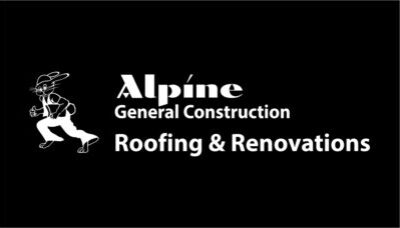
Maintaining the integrity of a roof is crucial for ensuring the overall safety and value of a home. A roof serves as the first line of defense against the elements, protecting not only the structure but also the interior from potential damage caused by water, wind, and debris. As such, identifying key indicators of roof damage becomes an essential responsibility for homeowners.
Roof damage may not always be immediately visible. Over time, wear and tear from weather conditions can lead to various forms of deterioration, such as leaks, missing shingles, or structural weakening. These issues, if left unchecked, can escalate into more significant problems, resulting in extensive and costly repairs. Therefore, maintaining vigilance and awareness of potential indicators of roof damage is imperative.
Regular inspections play a vital role in early detection of roofing issues. Homeowners should be attuned to common signs, such as discoloration on ceilings, sagging areas, and water pooling near the foundation. Additionally, changes in energy bills could suggest inefficiencies due to inadequate roof performance, serving as an indirect indicator of underlying damage. By being proactive in identifying these indicators, homeowners can take timely action to address problems before they evolve into more serious concerns.
Moreover, being informed about the various types of roof damage—whether it be caused by weather conditions, pests, or age—can empower homeowners to seek professional evaluations and maintain the safety of their property. It is advisable to consult roofing professionals if any indicators of damage are present, as they possess the expertise needed to assess the roof’s condition accurately. Ultimately, prioritizing regular maintenance and awareness can safeguard a home from the consequences of neglectful roof care.
Common Causes of Roof Damage
Several factors contribute to the deterioration of roofs, making understanding these elements crucial for homeowners. One of the primary causes of roof damage is adverse weather conditions. Storms, hail, and high winds can inflict severe harm on roofs. For instance, heavy rain combined with strong winds can lead to the penetration of water beneath shingles, causing leaks and further structural damage. Similarly, hail can create dents and cracks in roofing materials, weakening their integrity and performance over time.
Another significant factor is the age of the roof. As roofs age, the materials can become less effective in resisting environmental stressors. The natural wear and tear can lead to vulnerabilities that make roofs more susceptible to damage from weather conditions, debris, and other external forces. An aging roof may also exhibit symptoms such as curling shingles, discoloration, or granule loss, all of which are indicators of the need for urgent inspection and potential replacement.
Poor installation practices can further exacerbate the problem of roof damage. Inadequate roofing work may result in weak spots where water can accumulate, or seams that fail to properly seal, leading to leaks. It is essential that homeowners engage qualified professionals who adhere to industry standards when installing or repairing roofs to minimize the risk associated with improper techniques.
Lastly, a lack of maintenance can play a significant role in the deterioration of roofs. Regular inspections and minor repairs can prolong a roof’s life and preserve its condition. Without routine checks, problems may go unnoticed until they escalate into more significant issues, necessitating costly repairs or replacements.
Visual Indicators of Roof Damage
Assessing the condition of a roof is a crucial task for homeowners, as timely identification of damage can prevent further complications and costly repairs. Among the most straightforward methods of assessing a roof’s integrity is through visual inspection. There are several key indicators of roof damage that can signal the need for immediate attention.
One of the most common signs to look for is missing shingles. This can occur due to severe weather conditions, such as high winds or storms, which may dislodge shingles from their intended position. The absence of these protective elements can expose the underlying materials to moisture, leading to more extensive damage over time. Homeowners should routinely check their roofs for any unusual patches where shingles should be present.
Curling or buckling shingles are also serious visual indicators of roof damage. Shingles may curl upward at the edges or buckle in the middle, which can be attributed to age, poor ventilation, or installation issues. Such deformities can compromise the roof’s integrity, allowing water to seep underneath and cause deterioration of the roof deck.
Another significant visual cue is the presence of stains on ceilings or walls. Water stains often indicate leaks from the roof, which can be caused by missing shingles, damaged flashings, or clogged gutters. These stains may vary in color but typically present a clear signal that water infiltration is occurring.
Lastly, homeowners should be vigilant about granules accumulating in gutters. Asphalt shingles are designed with these granules, which provide UV protection and structural integrity. A significant amount of granules in gutters can suggest that shingles are deteriorating, indicating a potential need for roof replacement or repairs. Regular visual inspections focusing on these indicators will enable homeowners to maintain their roofs effectively, ensuring longevity and safety.
Non-Visual Signs of Roof Damage
While visual inspections of a roof are important for identifying key indicators of roof damage, there are several non-visual signs that can signal potential underlying issues. Homeowners should be attentive to these indicators as they may point to more serious problems that require attention.
One common, yet often overlooked sign, is an increase in energy bills. If you notice an unexplained surge in your heating or cooling costs, it may be due to a damaged roof. Gaps or holes in the roofing material can lead to substantial heat loss in the winter and cooling inefficiencies in the summer, putting a strain on your HVAC system and driving up energy expenses. This heightened demand can often manifest as higher utility bills, drawing attention to the need for a thorough roof evaluation.
Another key indicator includes unexplained leaks. Homeowners may occasionally find water stains on ceilings or walls that don’t seem to correlate with rainy weather patterns. These leaks can emerge from small, undetected holes or damaged flashing, often located in various roof areas. It is crucial to investigate the source of any leaks, as they may suggest that your roof is compromising your home’s integrity.
Additionally, drafts within the home can provide clues regarding roof damage. If you feel cold air entering your living space on windy days, it could indicate that your roof’s insulation or components are failing. Such drafts might not only be uncomfortable but can also lead to further issues such as mold growth or structural deterioration over time due to excess moisture.
These non-visual signs serve as valuable indicators for discerning potential roof damage. By remaining vigilant and responsive to these clues, homeowners can address issues promptly before they escalate, safeguarding the integrity of their home.

Tools for Roof Inspection
Conducting an effective roof inspection necessitates the use of specific tools designed to aid in identifying key indicators of roof damage. Each tool plays a crucial role in ensuring that inspectors can thoroughly evaluate the condition of a roof while maintaining safety and effectiveness during the procedure.
One essential tool is a sturdy ladder that allows access to different roof sections. It is vital that the ladder is rated for the appropriate weight and is positioned on stable ground. Inspectors should always follow proper ladder safety practices, such as having someone hold the base while climbing. This ensures the inspector can safely reach elevations for a comprehensive examination of shingles, flashing, and other roof components.
Another useful item is a flashlight, especially for inspecting dimly lit areas such as attics or underneath overhangs. A bright, high-powered flashlight can reveal potential areas of concern like cracked shingles or signs of leaks. Inspectors should pay close attention to areas where water may have accumulated, as this can be a primary indicator of water damage to the roof structure.
Utilizing binoculars can enhance the inspection process, allowing for a detailed view of the roof from the ground. They can help identify damage or wear without the need for climbing onto the roof itself. This is particularly advantageous for steep or high roofs, where the risk of falls increases. Inspectors can look for loose or missing shingles, debris accumulation, and other signs throughout the inspection process.
Lastly, moisture meters can be critical in determining if any areas of the roof have sustained water damage. These devices can measure moisture levels in materials and help identify hidden leaks. When used effectively, moisture meters can pinpoint problem areas that may not be immediately visible during a physical inspection.
By utilizing these tools properly, inspectors can make informed assessments, ultimately paving the way for necessary repairs or replacements when identifying indicators of roof damage.
DIY Roof Inspection Tips
Conducting a roof inspection can be a straightforward and empowering task for homeowners. However, it is essential to approach this process with caution and preparedness. Before starting your inspection, ensure you have the necessary tools, such as a sturdy ladder, a flashlight, and a notepad for taking notes. Safety should always be your priority; if the roof is too steep or the weather is inclement, consider hiring a professional instead.
Begin your inspection in a safe manner by thoroughly examining the exterior of your home. Look for visible signs of damage, such as missing shingles, cracked tiles, or accumulated debris. Pay particular attention to areas around chimneys, vents, and skylights, as these spots are often prone to leaks. Observing discoloration or sagging can also be key indicators of roof damage worth noting.
When you feel secure on your ladder, take a closer look at the roof surface itself. Check for rust or damage on metal flashings, which are vital for directing water away from vulnerable areas. During your inspection, note any cracked or curling shingles, as these can be early indicators of roof deterioration. If you find granules from asphalt shingles in your gutters, this may signal that replacement is on the horizon.
After completing your visual inspection, proceed to the interior of your home. Examine the ceilings and attic for any signs of leaks or water stains, which can point to roofing issues as well. Dark spots or mold growth could indicate the presence of moisture, a significant concern for roof integrity.
Your DIY efforts are essential in identifying key indicators of roof damage, but part of maintaining your home is knowing when to seek professional help. If you notice widespread damage, extensive wear, or if repairs stretch beyond your skill level, it is prudent to contact a qualified roofing contractor. Ultimately, regular inspections will keep your roof in optimal condition, safeguarding your home against significant problems in the future.
When to Call a Professional Roofer
Recognizing when to call a professional roofer is critical for maintaining the integrity and safety of a home. Homeowners often encounter situations where roof damage may not be immediately apparent, making it essential to rely on experts to accurately assess the condition of the roof. Certain scenarios warrant immediate professional intervention, particularly when key indicators of roof damage become evident.
One of the primary situations necessitating professional assistance is significant visible damage, such as missing or curling shingles, large cracks, or sagging areas. These signs often indicate underlying issues that may compromise the roof’s structure, requiring specialized knowledge and tools to address effectively. Additionally, if there is water leakage present in the interior of the home or observed stains on ceilings and walls, this is a serious red flag. Such leaks may suggest extensive damage that could lead to mold growth and further deterioration of the roofing system if not addressed promptly.
Moreover, after severe weather events, such as storms or heavy snowfall, it’s advisable to enlist the help of a professional roofer. Even if no visible damage is present, hidden vulnerabilities could exist. Experts can perform thorough inspections to identify any potential issues that may not be noticeable to the untrained eye. Furthermore, the complexities involved in roof repairs, particularly for steep or high-pitched roofs, necessitate professional skills for both safety and proper execution.
In addition to safety concerns, hiring a professional roofer ensures quality repairs, as they often provide warranties that can protect against future issues. Seeking professional help when suspicion arises regarding potential roof damage is a proactive approach that can save homeowners significant costs in the long run. It allows for an early resolution of problems before they escalate, thereby safeguarding the home’s value and the safety of its inhabitants.
Preventative Maintenance to Extend Roof Life
Regular roof maintenance plays a crucial role in identifying key indicators of roof damage and ensuring the longevity of your roofing system. One essential practice is conducting routine inspections at least twice a year, ideally in the spring and fall. These inspections allow homeowners to detect potential issues like cracked shingles, rusted flashing, or accumulated debris before they escalate into more significant problems that could compromise the roof’s integrity.
In addition to inspections, cleaning gutters is another vital aspect of preventative maintenance. Clogged gutters can lead to improper drainage, causing water to pool on the roof and increasing the risk of leaks and water damage. By ensuring that gutters are clean and free of debris, homeowners can help maintain proper water flow and protect their roofs from potential hazards associated with water accumulation.
Timely repairs are equally important in the maintenance of roofing systems. If any signs of roof damage are identified during inspections, such as loose shingles or minor leaks, addressing these issues immediately can prevent more extensive damage and costly repairs in the future. Homeowners should consider hiring a professional roofing contractor to carry out these repairs, as they possess the expertise to identify and rectify issues that may not be easily noticeable to the untrained eye.
Furthermore, investing in preventative measures such as roof coatings can also help extend the lifespan of a roofing system. These coatings provide an extra layer of protection against UV rays and weather elements, reducing the wear and tear that roofs endure over time. By adopting a proactive stance towards roof maintenance, homeowners can effectively identify key indicators of roof damage early on, thus safeguarding their investment and enhancing the overall durability of their roofing system.
Conclusion and Summary
In the realm of property maintenance, identifying key indicators of roof damage is paramount. Roofs serve as the first line of defense against environmental elements, and their deterioration can lead to extensive damage both structurally and financially. Without proper vigilance, small issues may escalate into significant problems requiring costly repairs or even complete replacements.
Being proactive in monitoring your roof’s condition cannot be overstated. Regular inspections allow homeowners to detect early signs of damage, such as missing shingles, discoloration, or leaks. These indicators should not be overlooked, as they often signify underlying issues that can compromise the integrity of the entire structure. Moreover, seasonal changes can impact a roof, making it essential to pay close attention after storms or extreme weather events.
For those seeking to understand more about roof care, numerous resources are available. Engaging with professional roofing services can offer expert insights into identifying damage and maintaining roof health. Additionally, there are various online platforms and literature specifically focusing on home maintenance, roof inspection checklists, and DIY solutions. Educating oneself on the nuances of roof care enhances the ability to spot key indicators of roof damage early and act accordingly.
Ultimately, taking the initiative to monitor and maintain your roof can extend its lifespan significantly. By recognizing the symptoms associated with roof issues and addressing them promptly, you safeguard your property and investment. Therefore, understanding indicators of damage and the corresponding preventative measures is essential for any homeowner aiming to preserve the integrity of their home.


